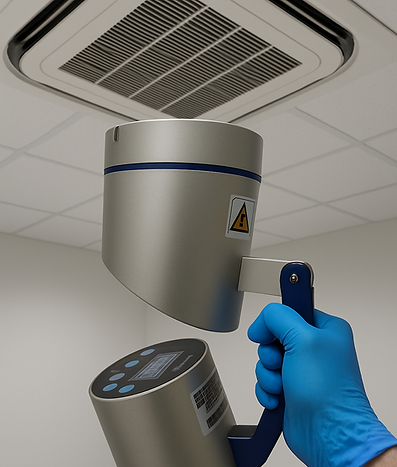

Microbiological air analysis detects the presence of airborne microorganisms, such as bacteria, molds, and yeasts, which can affect human health, spoil products, and harm environmental quality. It also helps prevent risks associated with biological air pollution and ensures a healthy and safe environment.
Why is it important to analyze AIR?
Air analysis is essential to ensure healthy and safe environments in industrial, public, and professional spaces. It allows for the detection of microorganisms that can affect human health and product quality. Thus, it helps prevent health risks, ensures manufacturing quality, and maintains optimal hygiene conditions in sensitive areas. In short, air quality monitoring contributes to the protection of public health and compliance with health standards.
Where is it important to analyze AIR?
-
Food industry
-
Cosmetics and pharmaceutical industry
-
Healthcare sector (hospitals, clinics, laboratories)
-
Public spaces
-
Offices and commercial premises
-
Laminar flow hoods and biological safety cabinets

WHAT ANALYSES DO WE PERFORM?
To assess the microbiological load in the air, we use two complementary sampling methods:
-
The biocollector (active sampling): This draws a defined volume of air through a Petri dish, allowing for precise measurement of microbial concentration.
-
The Petri dish exposed to the air (passive sampling): This captures suspended microorganisms through natural sedimentation.
What parameters are analyzed?
-
Bacteria: 30°C
-
Yeasts and molds: 25°C